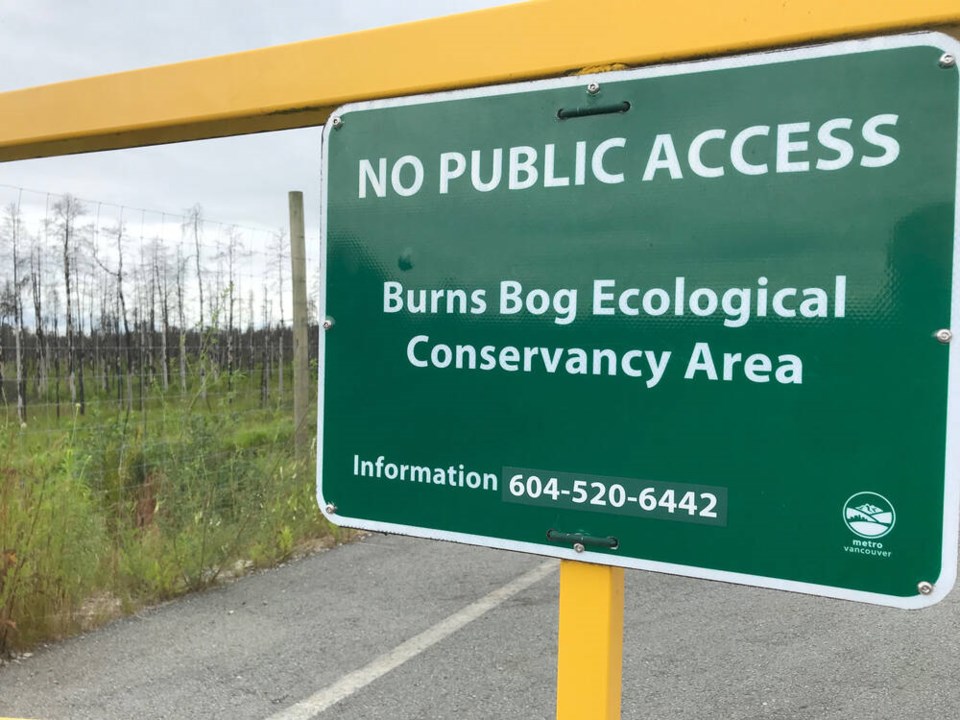The physical measures to protect Burns Bog generally appear to be effective.
That’s according to a Delta staff report to council on the design elements on the Ministry of Transportation and Infrastructure’s recently completed Highway 91/17 Upgrade Project to protect the sensitive Burns Bog ecosystem.
The report notes mitigation measures included physical separation of highway and bog water, native tree and shrub plantings and invasive species control. Monitoring included air quality, water quality, water levels and wildlife. The province has committed to continue monitoring for three years post-completion.
Delta, Metro Vancouver staff and the regional district’s Burns Bog Scientific Advisory Panel provided guidance to the province’s consultants to assist in designing measures to protect the bog from highway construction and operation.
With approval from the city and Metro Vancouver, two hectares of the adjacent Delta Nature Reserve were removed from the park and transferred to the province to facilitate a new road alignment.
In exchange, a three-hectare parcel of bog land west of Highway 91 was provided to Delta for conservation purposes, although parcel has not yet been added to the Burns Bog Ecological Conservancy Area.
The project also involved a 170-metre segment of boardwalk in the nature reserve relocated to move the boardwalk further away from the new highway lanes.
The old alignment of the relocated boardwalk segment was replanted with native species last year, but, this September, staff observed that survival of the planted shrubs was limited and that many weedy species had established. The report notes staff requested that the removal of the weeds and any bare peat be replanted with native shrubs.
The final mitigation measures upon highway completion included a peat berm, a peat cap on a highway embankment, an adjustable weir to control bog water levels and planting of native trees and shrubs.



